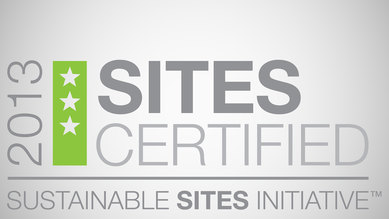Performance Metrics for Sustainable Landscapes
New Approaches for Measuring Landscape Benefits
Landscape is often viewed as the warm and fuzzy side of sustainable design. While nearly everyone agrees that enhancing a site’s natural character and ecological diversity has positive benefits, quantifying the value of those benefits is a little more complex. Yet this task is essential for clients and designers trying to balance the diverse demands of budget, schedule, and sustainable integrity.
Fortunately new design rating systems are emerging, systems that go beyond LEED to evaluate the design performance of sustainable landscapes. These new tools help better define how to achieve sustainability in site selection, water management, soils and vegetation, and social/cultural connection.
The Sustainable Sites Initiative or SITES is the first comprehensive rating system for the design, construction, and maintenance of sustainable landscapes. George ‘Doc’ Cavalliere Park was selected to participate in the initial pilot program for the SITES Guidelines and Benchmarks; when the park received a 3-star certification in 2013 it became the first SITES certified project in Arizona. Lessons learned from the national pilot process have been instrumental in refining the guidelines for SITES’s official release.
Quantifying post construction project performance is essential to building a knowledge base for sustainable landscape strategies. This has been the primary focus of the Landscape Architecture Foundation’s Landscape Performance Series. This invaluable online resource develops and shares case studies that measure a project’s environmental, social and economic benefits. Recent case studies have included Carmel Clay Central Park and Milliken State Park. The site also features a benefits tool kit, fast fact library, and scholarly research. For example, tools on this website can help calculate the economic and environmental benefits of a row of street trees.
These new metrics and guidelines, along with the 2030 Challenge and Living Building Challenge, are helping to better define the benefits of sustainable landscape design. As practitioners we have a unique opportunity to both utilize and advance this important work, creating warm, inviting landscapes that provide clear sustainable performance.
